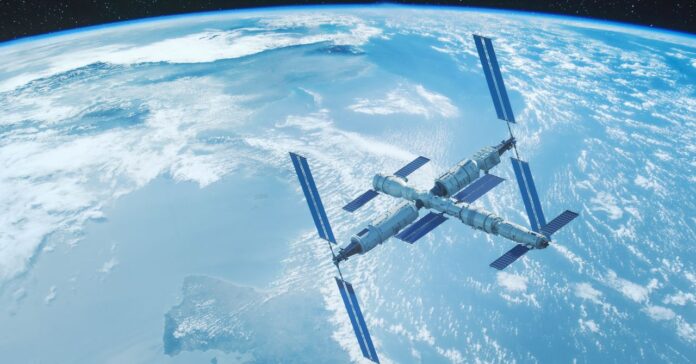Wrapping up 204 days in orbit, three Chinese astronauts flew back to Earth aboard a Shenzhou spacecraft Friday, leaving three crewmates behind on the Tiangong space station with a busted lifeboat.
Commander Chen Dong, concluding his third trip to space, and rookie crewmates Chen Zhongrui and Wang Jie touched down inside their spacecraft at the Dongfeng landing zone at 1:29 am EST (06:29 UTC) Friday. The parachute-assisted landing occurred in the mid-afternoon at the return zone, located in the remote Gobi Desert of northwestern China.
Chinese space officials upended operations on the country’s Tiangong space lab last week after astronauts found damage to one of two Shenzhou return capsules docked at the station. The China Manned Space Agency, run by the country’s military, announced changes to the space station’s flight plan November 4, the day before three crew members were supposed to depart and fly home.
Chen and his crewmates were preparing to board the Shenzhou 20 spacecraft for the ride back to Earth a few days after the arrival of three replacement crew members on the newly launched Shenzhou 21 capsule. Shenzhou 20 is the same spacecraft that launched Chen’s crew in April.
But a little more than a week ago, Chinese officials said the Shenzhou 20 spacecraft was “suspected of being impacted by small space debris” and confirmed the return trip would be postponed. Officials provided no additional details.
China’s human spaceflight agency released a cryptic statement earlier this week saying preparations were underway for the crew’s undocking and landing, but the circumstances of the return remained opaque until hours before the astronauts’ homecoming. Finally, officials confirmed the details of the return to Earth late Thursday.
“Based on preliminary analysis of photographs, design review, simulation analysis, and wind tunnel tests, a comprehensive assessment determined that the Shenzhou 20 manned spacecraft’s return capsule window glass had developed a minor crack, most likely caused by an external impact from space debris,” the China Manned Space Agency wrote on Weibo, the Chinese social media platform. “This does not meet the release conditions for a safe manned return.”
Swapping Spacecraft in Low-Earth Orbit
With their original spacecraft deemed unsafe, Chen and his crewmates instead rode back to Earth on the newer Shenzhou 21 craft that launched and arrived at the Tiangong station October 31. The three astronauts who launched on Shenzhou 21—Zhang Lu, Wu Fei, and Zhang Hongzhang—remain aboard the nearly 100-metric ton space station with only the damaged Shenzhou 20 craft available to bring them home.
China’s line of Shenzhou spaceships not only provide transportation to and from low-Earth orbit, they also serve as lifeboats to evacuate astronauts from the Chinese space station in the event of an in-flight emergency, such as major failures or a medical crisis. They serve the same role as Russian Soyuz and SpaceX Crew Dragon vehicles flying to and from the International Space Station.
Another Shenzhou spacecraft, Shenzhou 22, “will be launched at a later date,” the China Manned Space Agency said in a statement. Shenzhou 20 will remain in orbit to “continue relevant experiments.” The Tiangong lab is designed to support crews of six for only short periods, with longer stays of three astronauts.




